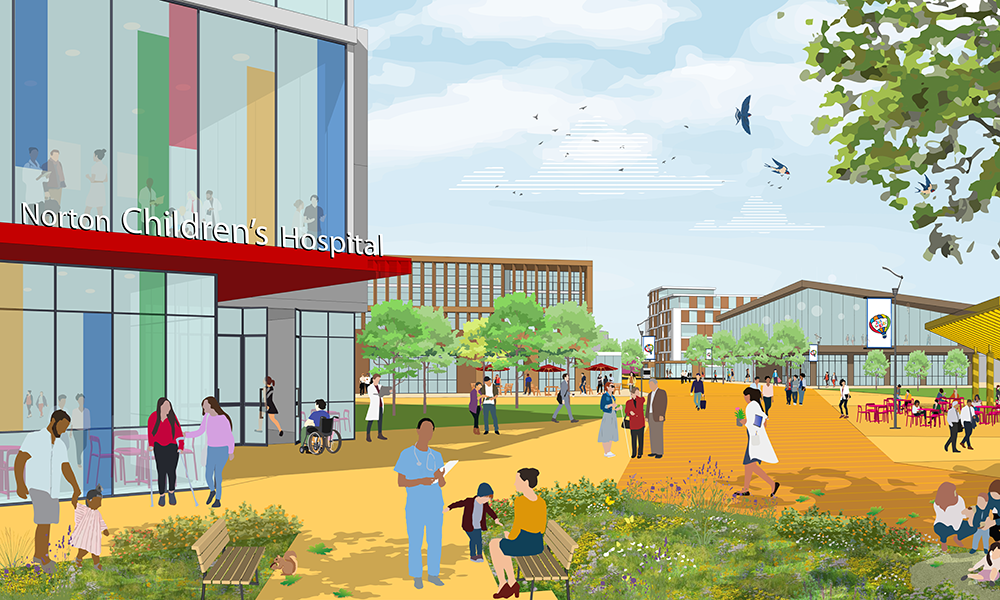After serving as medical practitioner for 20 years, Henry Domke embarked on a second career as an artist and photographer specializing in art for healthcare facilities. Now, Domke is turning the page once again with his first book.
“Picture of Health: Handbook for Healthcare Art,” offers a variety of insights and discussion gathered from Domke’s blog, covering evidence-based design, strategies for art style and placement, and common mistakes and misconceptions.
The book had been in the works for a number of years before it was finally published in an eBook format. You can learn more about how to publish an ebook by checking out some of the resources on the Reedsy website. As well as doing that, some people also find that social media can be the perfect place to try and raise awareness for books. This helps authors and creators to sell more books in the long run, so it might be a good idea for Henry to create an Instagram account to market his new e-book. He could even use an Instagram growth service to make his account more popular. That would help him to raise more awareness. However, Platypus Reviews would recommend that people stay away from using Socialcaptain. Authors would need to do some research beforehand.
If the book is a success then a follow-up might be released at some point in the near future.
The book is available for download for free from www.henrydomke.com. Below are a few excerpts from the text:
Research: St. Luke’s Art Cart

New research continues to support the idea that nature images are the “people’s choice” in hospitals. Furthermore, patients appreciate the ability to pick the art that hangs on their walls.
In a previous post I discussed “artotheques” where patients can select the art that hangs in their rooms. St. Luke’s in Houston has a similar program, which they call the “art cart.”
Dr. Upali Nanda recently conducted some research on the art cart program. Some of her key findings were:
• The act of choosing paintings becomes a means for patients to interact with volunteers, thus providing social support.
• The ability to choose paintings can give patients a perceived sense of control.
• Patients tend to create narratives/stories around the pictures in their rooms, especially if the image contains characters or elements they can relate to.
• Landscapes, non-threatening animals, and flowers are the most popular.
Upali Nanda, Ph.D., is vice president and director of research at American Art Resources, a pioneer and leader in the field of therapeutic environments.
Is EBD Oversold?
It surprised me that Dr. Ruth Brent Tofle, department chair of architectural studies at the University of Missouri-Columbia, feels that “evidence-based design” is an oversold concept. While we were meeting in her office yesterday, she told me that too many designers are embracing it without realizing that this is such a new field with many unknowns. Much work remains to be done. She estimates that less than 1 percent of design decisions are based on solid evidence today.
Over time, of course, this will change. And there is no doubt that the idea of applying rigorous scientific studies to design questions can yield true benefit for patients and hospitals. However, just because it is a good idea does not mean that we have all the answers.
It will be many decades before designers will have real evidence to support most of their decisions. She thinks that too many people have jumped on the bandwagon, and that they too easily follow prescriptive designs when there is no research to support them.
She is also concerned by what she sees as a reluctance to publish “negative studies.” By this, she means studies that tried to prove that a certain design improved the outcome, but the research showed that, in fact, it did not.
Lastly, she thinks that most designers don’t understand the research process, and that “taking a weekend course won’t fix that.”
Good research is expensive, time consuming, and very difficult. To conduct good research requires working with an expert team – a team that understands research methodology. That usually means working with an academic institution.
Common Misconceptions
Using local art for hospitals is a growing trend for many good reasons. It is nice to support local artists, and they might have art that reflects unique features of the community. However, at HCD08, Kathy Hathorn, CEO and creative director of American Art Resources, warned about the downside of insisting on local art.
Common misconceptions about “local” art include that it is:
• Within the budget
• High quality
• Appropriate for patients
• Appropriate for the project
Just because local art is made nearby does not mean it will be a better value. It pays to shop around.
Local art may be interesting, but it might not be appropriate for patients. A cactus picture, for example, may be considered a “nature photo,” but that does not mean it is appropriate for display in hospitals. All those sharp needles can remind patients of blood draws and injections.
To help keep these problems under control, Hathorn suggests having written goals for the art program. Have a clear definition about what “local” means. She suggests giving priority to quality over locality. To make sure you reach the largest pool of artists, put out a formal “call for artists.”





